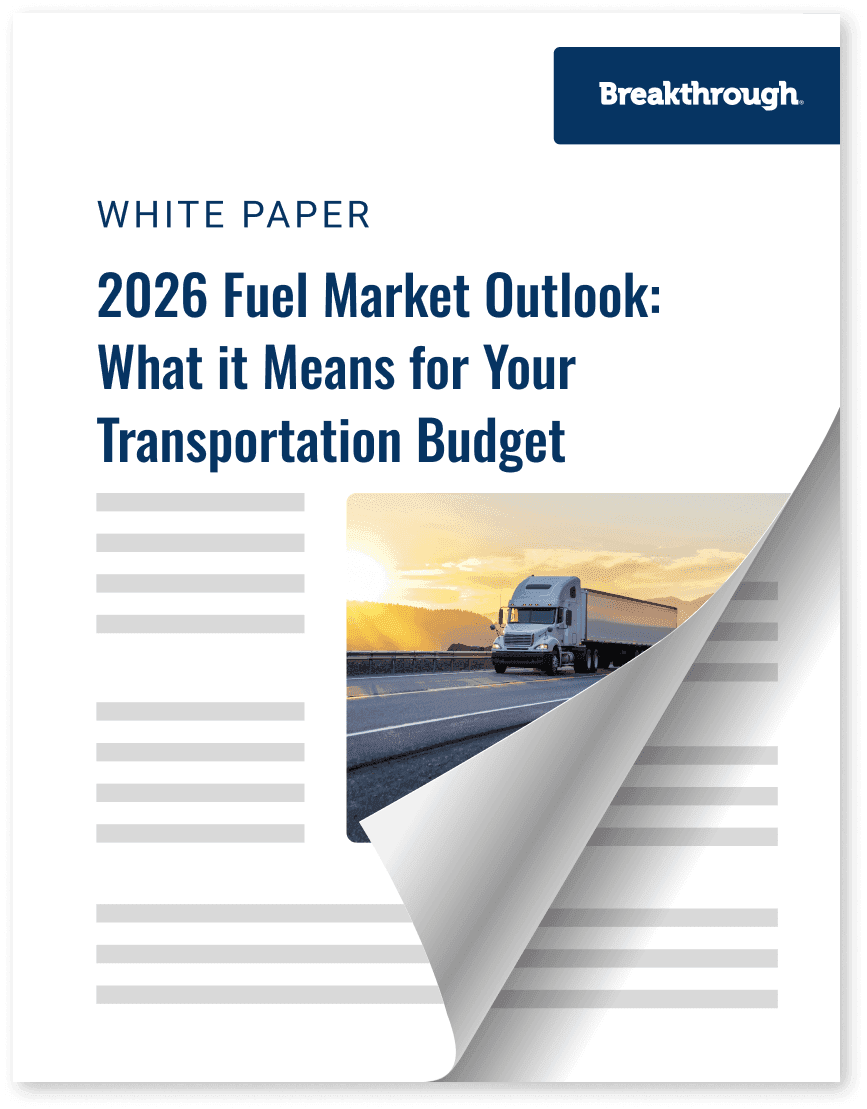2026 Fuel Market Outlook: What it Means for Your Transportation Budget

Trending
Top Posts
5 min read
June 14, 2019

Share:
Table of contents
Browse the table of contents to jump straight to the part you’re looking for
Crude oil is the most widely traded commodity in the world, primarily because of its use to create a wide portfolio of transport fuels, such as gasoline, diesel, and jet fuel, as well as provide critical refined products for other industries such as petrochemicals and asphalt. —all of which amount to about a 100 million barrel per day market. Due to this versatility, fluctuations in its supply and demand dynamics influence price changes across commodities and equities markets.
For this reason, an intergovernmental alliance called the Organization of the Petroleum Exporting Countries (OPEC) was formed to purposely and strategically facilitate more balanced market prices.
The purpose of OPEC is to unify producing member policies to ensure “the stabilization of oil markets in order to secure an efficient, economic and regular supply of petroleum to consumers, a steady income to producers and a fair return on capital for those investing in the petroleum industry” according to their mission. Ultimately, the group controls prices by forcing the market with economic fundamentals to secure economic and political gain.
Since its inception, OPEC has been the single largest player in the global crude oil production equation holding roughly 30 percent of the market share. Historically, when other much smaller players deviated production from the plan, the impact was muted, and markets continued to behave in close alignment to expectations. Overarchingly OPEC decisions played a nearly independent role in driving not only the cost of crude oil but refined products like diesel and gasoline. This made it imperative for shippers and transportation professionals in charge of their budget to pay attention to.
While OPEC is still the single consolidated source that measures and balances the market, they are now one among several large and emerging players that dilute their ability to move the market in a silo. Increases in US and Russian crude oil production tend to offset cuts and decisions made by OPEC. As the global crude oil landscape becomes more fragmented and diversified, the process of controlling prices is becoming more complex.

With this more diluted distribution of power taking center stage, OPEC’s fourteen member countries have added a “+” contingent of countries to their cause (OPEC+). The “+” is made up of ten additional countries that agree to help balance the market but are not required to operate under terms of full membership. This addition illustrates OPEC’s need to reclaim market share by having more allies join forces to support their ability to control prices.
US energy abundance from quickly growing domestic production has positioned them as a dominant player in the crude oil landscape. As such, the political and strategic decisions made by the US create far-reaching shockwaves in crude oil dynamics. This market presence can sometimes overshadow OPEC’s decisions because they are no longer the only large player. In some cases, it appears OPEC is responding to US production news, rather than driving the narrative.
Additionally, increased US foreign policy—like Iranian sanctions and policy related to Venezuela for example—is starting to naturally cut production for OPEC. Deficits coming from Iran and Venezuela and rising tensions among member countries suppress the supply side of the equation, which eliminates the need for OPEC force cuts among their remaining members.
Caption: Collectively OPEC+ produces over 40 percent of the world’s crude oil, so any decisions made by these exporters continue to impact global commodities and equities markets. Saudi Arabia and Russia anchor this group, accounting for just under half of OPEC+ production. The swift pace of US oil production growth has represented the most significant challenge to OPEC+ agreements.Source: International Energy Agency, US Energy Information Administration
To determine the optimal amount of production needed to control prices, OPEC and other nations within its production-cutting accord (OPEC+) evaluate the current state of global crude oil supply and demand and try to predict how that balance will fluctuate in the future based on their best estimation of how market events will unfold. Disruptions to pipelines, crude oil transportation, foreign relations, and changing policy could all impact the decisions of the organization.
For shippers, these production decisions and market disruptions ultimately have an impact on the price of diesel and other refined products that contribute to their bottom-line transportation spend.
In 2019, the global crude oil supply growth is outpacing weaker-than-anticipated demand, likely leading to a period of excess supply. In late June, OPEC must decide how they would like to move forward to prevent crude oil prices from falling further. Their decision, however, comes with more complicated economic conditions than has been typical in recent years.
Despite this natural balancing act caused by US foreign policy, the landscape remains volatile, and predicting the next moves is becoming increasingly difficult. Because of this uncertainty, countries, and companies are less likely to make significant investments in infrastructure, manufacturing, and trade, which dampens economic outlook and ultimately weakens demand.
All these stipulations do not negate the relevance and power of OPEC in terms of driving global prices, but they do change the conditions under which they operate. They are no longer the market-driving force they once were, and now must be reactive as the US claims greater market share.
Their original June meeting date was delayed to July 1. As the meeting approaches, shippers should continue to watch for OPEC+’s decision related to production to assess how diesel prices and transportation costs will be affected in the near term. It is important to bear in mind, however, that in the evolving geopolitical landscape of 2019, OPEC remains one of many important factors that influence the price of diesel.

6 min read
November 20, 2025
Understand the impact of Ukrainian drone strikes on Russian refineries. Learn why diesel prices are volatile and how to protect your budget from market shocks.
Read more
7 min read
November 11, 2025
Discover how fuel management systems cut costs, track emissions, and improve reimbursement accuracy for modern freight operations.
Read more
6 min read
November 10, 2025
Explore how the proposed Union Pacific–Norfolk Southern merger could reshape rail in the U.S. Learn impacts on competition, pricing, and service.
Read more